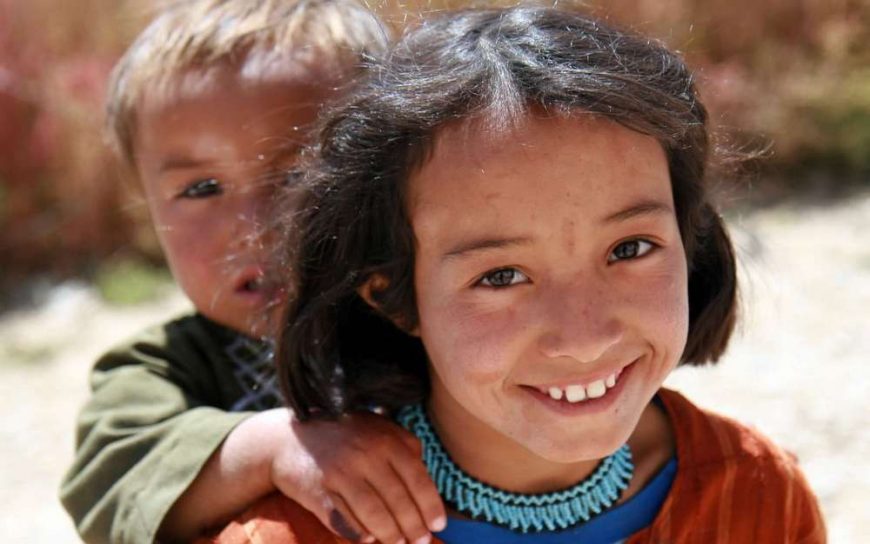Child Rights, Poverty, and Well-being: Measurement Debates and Empirical Advances
Image: Cornelia Walther
Children experience poverty differently from adults. This is the fundamental premise of the work to design specific, child-focused policies to eliminate child poverty. Devising, planning, and monitoring the impact of these policies without a proper measure of child poverty is almost impossible. However, most attempts to measure and analyze child poverty are challenged by the steps needed to measure it properly. In this article a solution is offered in this regard. In the context of global efforts, including by governments, to eliminate child poverty, UNICEF has developed a position on how to measure child poverty, based on a few simple and clear principles. These principles are meant to guide the measurement of child poverty. The main objective of this article is to explain and provide a rationale for this position as well as its relationship to related debates on child poverty measurement. Child poverty should be measured at the level of the individual child, not just as a disaggregation by age of household-level or adult-centered measurement. The measurement should be based on constitutive rights of poverty (i.e., those crucially and directly determined by access to material resources) and not on all possible problems children may face. As all rights are equally important, all dimensions should be equally weighted. The measurement should provide the prevalence as well as the depth/breadth/severity of child poverty. There are various groups of children who require different or special goods and services to fulfill the same rights constitutive of poverty as all other children. These needs ought to be incorporated into the measurement (e.g., children with disabilities may require assistive devices or indigenous children may require culturally appropriate learning materials). Implications and opportunities for flexibility and adjustment of such measures at the country level (while applying the principles) are also addressed in this article as well as a description of the most recent estimates of child poverty across developing countries using the same dimensions, indicators and thresholds.
Population Review
Volume 60, Number 1, 2021
Type: Article, pp. 141-170
Child Rights, Poverty, and Well-being: Measurement Debates and
Empirical Advances
Author: Enrique Delamonica
Affiliation: Data & Analytics Section, Division of Data, Analytics, Planning & Monitoring, UNICEF
Corresponding author/address: Senior Adviser Statistics and Monitoring (Child Poverty and Gender Equality), Data & Analytics Section, Division of Data, Analytics, Planning & Monitoring, UNICEF; email: edelamonica@unicef.org
Abstract
Children experience poverty differently from adults. This is the fundamental premise of the work to design specific, child-focused policies to eliminate child poverty. Devising, planning, and monitoring the impact of these policies without a proper measure of child poverty is almost impossible. However, most attempts to measure and analyze child poverty are challenged by the steps needed to measure it properly. In this article a solution is offered in this regard. In the context of global efforts, including by governments, to eliminate child poverty, UNICEF has developed a position on how to measure child poverty, based on a few simple and clear principles. These principles are meant to guide the measurement of child poverty. The main objective of this article is to explain and provide a rationale for this position as well as its relationship to related debates on child poverty measurement. Child poverty should be measured at the level of the individual child, not just as a disaggregation by age of household-level or adult-centered measurement. The measurement should be based on constitutive rights of poverty (i.e., those crucially and directly determined by access to material resources) and not on all possible problems children may face. As all rights are equally important, all dimensions should be equally weighted. The measurement should provide the prevalence as well as the depth/breadth/severity of child poverty. There are various groups of children who require different or special goods and services to fulfill the same rights constitutive of poverty as all other children. These needs ought to be incorporated into the measurement (e.g., children with disabilities may require assistive devices or indigenous children may require culturally appropriate learning materials). Implications and opportunities for flexibility and adjustment of such measures at the country level (while applying the principles) are also addressed in this article as well as a description of the most recent estimates of child poverty across developing countries using the same dimensions, indicators and thresholds.
Keywords
Child poverty, children, poverty, child rights, material deprivation, multidimensional poverty
© 2021 Sociological Demography Press
MLA
Delamonica, Enrique. “Child Rights, Poverty, and Well-being: Measurement Debates and Empirical Advances.” Population Review, vol. 60 no. 1, 2021, p. 141-170. Project MUSE muse.jhu.edu/article/793556.
APA
Delamonica, E. (2021). Child Rights, Poverty, and Well-being: Measurement Debates and Empirical Advances. Population Review 60(1), 141-170. https://www.muse.jhu.edu/article/793556.
Chicago
Delamonica, Enrique. “Child Rights, Poverty, and Well-being: Measurement Debates and Empirical Advances.” Population Review 60, no. 1 (2021): 141-170. muse.jhu.edu/article/793556.
Endnote
TY – JOUR T1 – Child Rights, Poverty, and Well-being: Measurement Debates and Empirical Advances A1 – Delamonica, Enrique JF – Population Review VL – 60 IS – 1 SP – 141 EP – 170 PY – 2021 PB – Sociological Demography Press SN – 1549-0955 UR – https://muse.jhu.edu/article/793556 N1 – Volume 60, Number 1, 2021 ER –
Always review your references for accuracy and make any necessary corrections before using. Pay special attention to personal names, capitalization, and dates. Consult your library for more information on citing sources.




